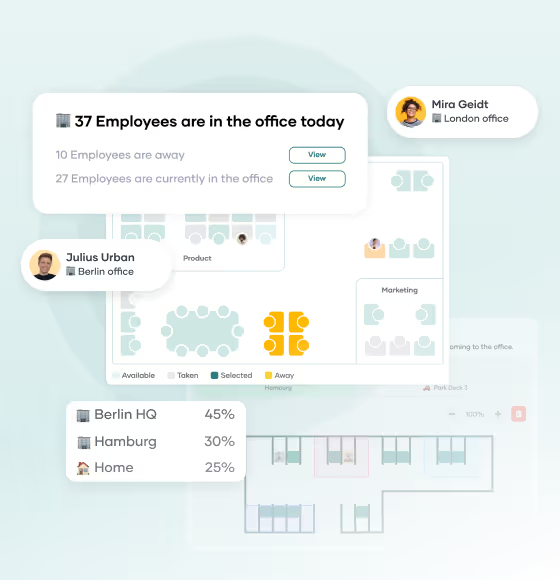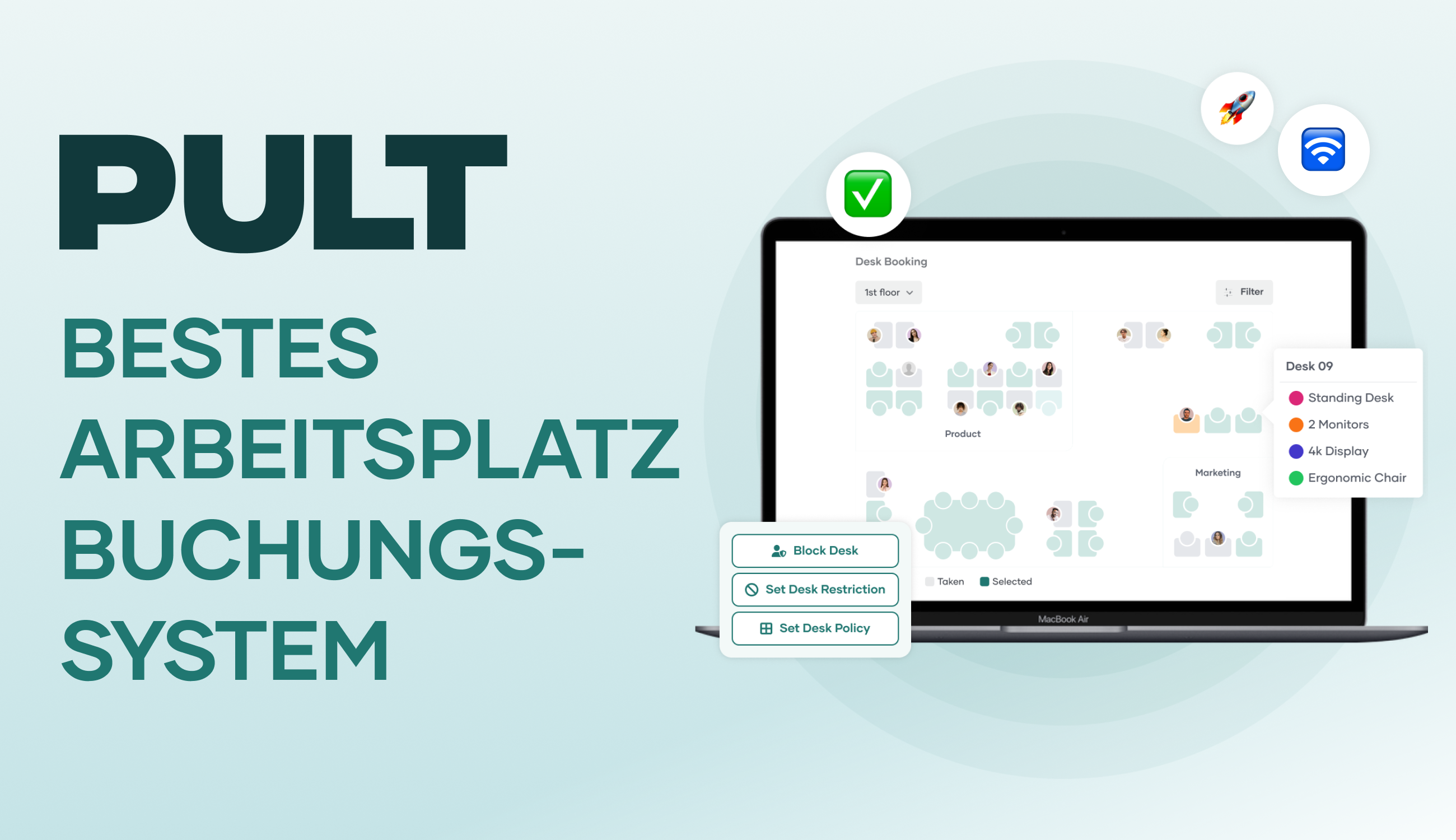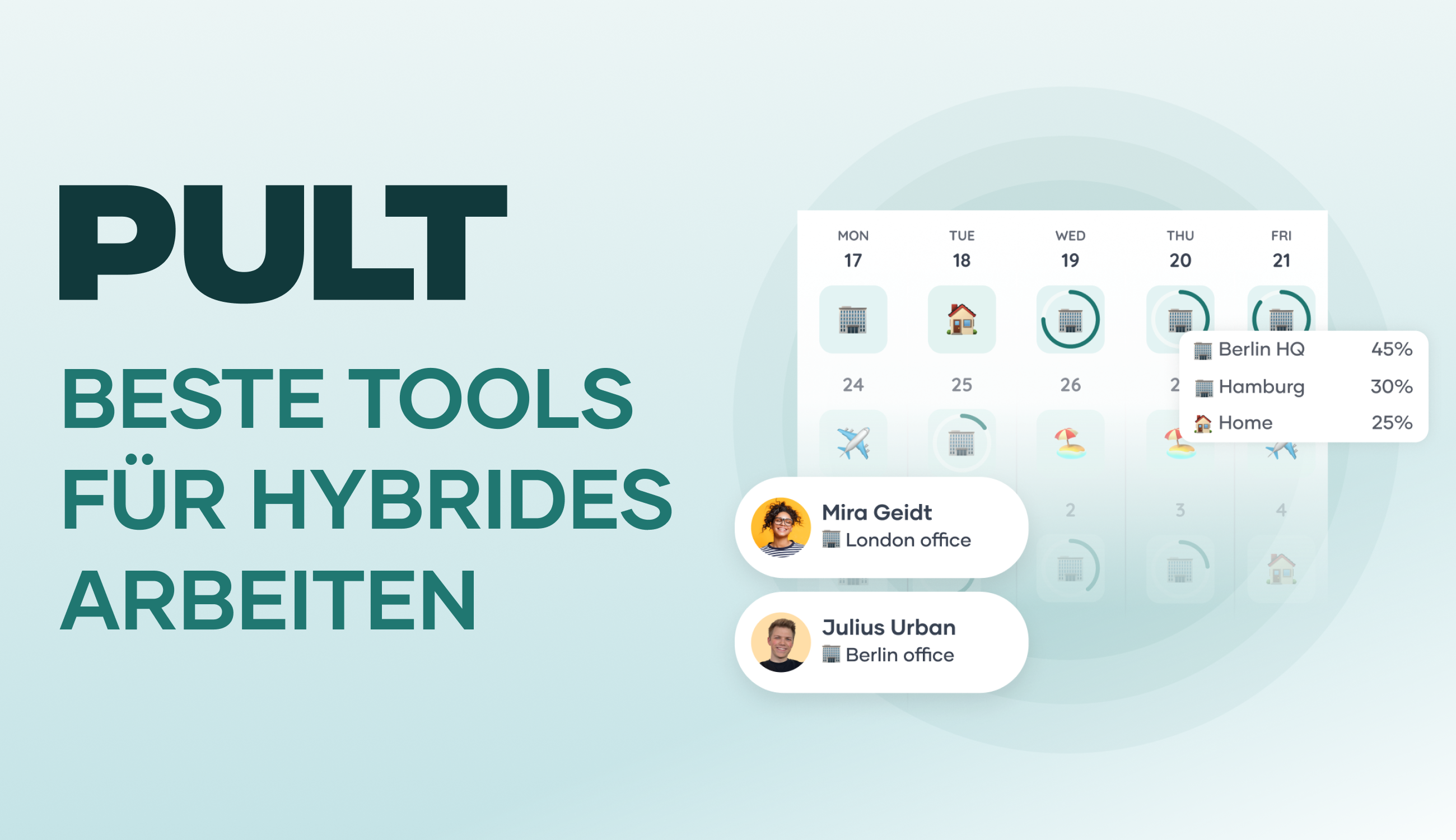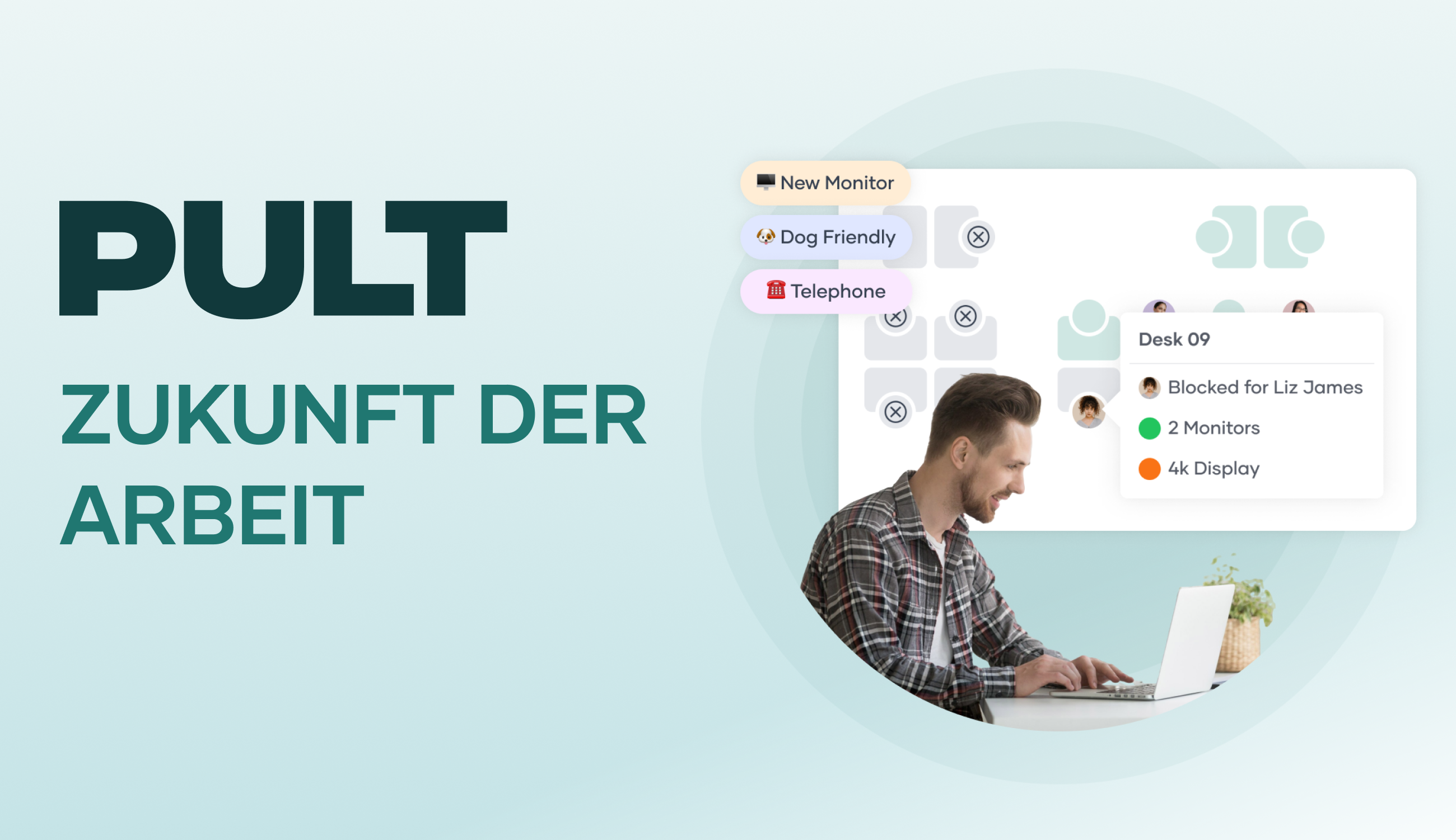Clean Desk: Order, data protection & well-being
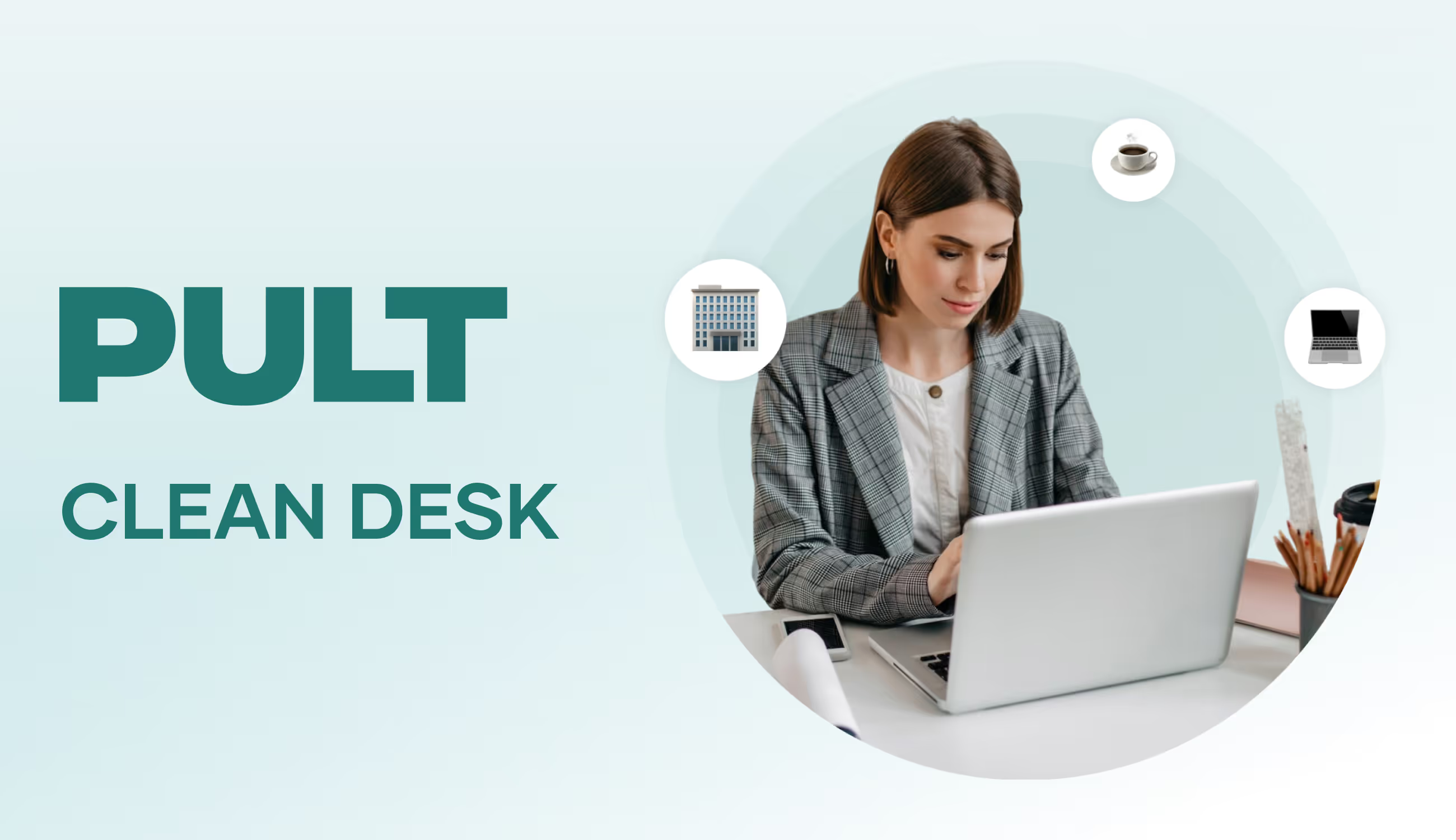
Clean desk in the office: definition, advantages and implementation
Nobody likes to sit down at a desk with coffee stains from the previous person. And no customer should see a printout with internal figures lying on a table during their visit. Both can be avoided with the clean desk principle. In this article, you will find out what Clean Desk means, what advantages it offers and why it is finding its way into many companies.
What does the clean desk principle mean?
The clean desk principle, also often referred to as the "white desk principle", emphasises a tidy, almost empty desk without unnecessary documents or personal items.
Essentially, the idea is that every employee leaves their desk empty, organised and therefore safe at the end of the day. This principle is borrowed from the Japanese 5S method for workplace organisation. According to this method, a tidy desk minimises distractions and therefore makes it easier to concentrate. The principle is backed up by studies that show that a tidy environment actually has a positive effect on productivity.
Data protection also plays a key role in Clean Desk: by regularly tidying up, confidential documents are not left out in the open, which helps to comply with GDPR regulations. Although the clean desk principle itself is not a legal requirement, those who follow this method fulfil the data protection requirements.
Clean Desk Policy: guidelines within the company
A clean desk policy is an internal company guideline that obliges employees to leave their workplace clean, tidy and free of confidential information at the end of the working day. The policy creates clear rules for tidiness, data protection and security, which is particularly relevant in open office concepts and desk sharing.
In security-critical industries (such as banking, insurance and healthcare), the implementation of a clean desk policy is often even a contractual requirement. Although neither the GDPR nor other laws explicitly require a clean desk policy, it supports compliance with data protection standards and ISO 27001 on information security. Last but not least, such a policy raises staff awareness of security and order in the workplace.
What should be included in a clean desk policy?
Specifically, the clean desk policy stipulates that all confidential papers must be locked away at the end of the working day, all digital devices must be logged off and all personal items must be stowed away. This ensures that no unauthorised person gains access to important documents. A good policy should include the following points:Objective and scope: to whom do the rules apply, in which areas?
- Storage obligations: What needs to be locked away daily (e.g. files, notes)?
- Digital security: Log off devices, activate screen locks.
- Private items: Personal items must be removed after work and stored safely.
- Hygiene and cleanliness: Free and clean surfaces.
- Responsibilities: Who controls, who supports?
- Dealing with violations: (Optional) Information on consequences in the event of repeated non-compliance.
How do you introduce a clean desk policy?
- Prepare employees for it: In workshops and feedback sessions so that participation is possible and the rules are clear to everyone.
- Formulate in a practical way: Clear instructions in a manageable number. The policy should fit on one A4 page.
- Communication: The Clean Desk Policy should be displayed several times in the office
- Start gently: A transition phase with friendly reminders is better than immediate strict control. Employees need time to internalise the requirements.
After-work check: the clean desk at the end of the working day
To implement the clean desk principle in everyday life, it is advisable to have a fixed tidying routine at the end of the working day. Employees should carry out the following steps before leaving the office:
- Secure documents: Remove all confidential documents from the desk and store them in lockable cabinets or drawers. Nothing containing personal or customer data should be left lying around.
- Lock computers and technology: Close all applications on the PC and shut down or lock the computer so that a login is required. Otherwise, disconnect the laptop and take it with you or lock it up.
- Tidy away work utensils: Tidy away office materials (pens, notebooks, business cards, USB sticks, etc.) so that the desk surface is clear. Nothing should be flying around.
- Take personal items with you: Remove personal items such as photos, notes, mugs or decorations from the workplace. Personal items belong in the locker or are taken home.
- Ensure cleanliness: Take away plates and coffee cups. If necessary, briefly wipe the table surface so that no crumbs or stains remain.
- Clear whiteboards and blackboards: If whiteboards, pinboards or flipcharts have been used in the office, make sure that no notes are left on them.
This closing routine ensures that everyone has a tidy desk the next morning. Some companies work with checklists or reminders to make tidying up in the evening a habit. It is important that the routine is shared by everyone. Visual reminders (e.g. notice posters) also help to raise awareness of the clean desk.
Advantages of the clean desk principle
A consistently implemented clean desk offers numerous advantages for both employers and employees:
- Ability to concentrate: a tidy desk reduces visual distractions. Employees can concentrate better as they only have what they need in front of them. Important documents are immediately to hand without having to search through piles of paper.
- Time savings through organisation: A standardised filing system or digital working means that time-consuming rummaging for documents is a thing of the past. Routine processes are faster if the workplace is organised in a standardised way.
- Self-organisation: The Clean Desk method works towards a structured way of working. Employees develop habits of tidiness and improve their self-organisation.
- Data protection, security: A huge advantage is the higher level of data security. Files lying around are always a security risk. However, if they are consistently locked away, the risk of data protection breaches is significantly reduced. This is particularly important in open-plan offices with public traffic.
- Impression on the customer: A tidy workplace radiates professionalism and seriousness. No customer wants to conduct important business in an office with a mess of paper. In addition, a consistently clean counter or desk leaves a consistently good impression, regardless of which employee is currently working there.
- Teamwork: Clean Desk creates the basis for working models in which employees take turns using the available workstations, also depending on the day's work (desk sharing). If everyone works according to the same organisation system, each workstation can be used by different people.
Disadvantages and challenges of Clean Desk
The clean desk principle has many advantages, especially under modern working models such as desk sharing. Nevertheless, there are occasional concerns in everyday working life. The good news is that there are pragmatic solutions for each of these issues.
Desire for individuality:
An empty desk does not mean that there is no room for personal items. Lockers or mobile pedestals allow employees to safely store family photos, notes or their favourite mug and still have them to hand at all times. It is quick and easy to place a few favourite items on the desk when starting work.
Creativity needs space:
Especially in creative professions, there may still be work-in-progress zones, with whiteboards, printouts, visuals, material samples, prototypes, etc. These zones can then only be shared with the employees involved. In this way, spontaneously generated ideas remain visible without abandoning the principle of order or undermining data protection.
Everyday effort:
Employees sometimes complain about the increased effort involved in having to return the desk to its original state every day at the end of work. However, a structured end-of-work check takes barely a few minutes. With fixed routines and visual reminders, daily tidying up soon becomes a matter of course.
Worry about control:
Clean Desk does not work through strict monitoring, but through trust, good communication and leading by example by managers. If the "why" is clear, motivation comes naturally.
Conclusion: Clean Desk and the associated policy are not a restriction, but an asset if both are well thought out and implemented in a human way.
Clean desk policy for desk sharing
The working model of many employees now consists of home office and office days, which makes the clean desk principle even more important. Desk sharing and hot desking, i.e. the sharing of workstations, are hardly conceivable without a clean desk.
With these sharing models, the number of available desks is reduced as the previously assigned desks are no longer utilised due to the proportion of people working from home. Based on the attendance figures, the appropriate number of desks is allocated and shared on a rotating basis.
So if employees use a different desk every day, everyone has to leave the desk as they found it: clean and free of personal items so that the next person can use it immediately. The white desk principle is one of the golden rules of desk sharing.
Tips for striking a balance between tidiness and well-being under Clean Desk
How can the clean desk principle be implemented without affecting employee motivation? By offering personal storage solutions, communicating tidiness in a positive way, actively involving employees and setting clear standards that are suitable for everyday use.
Offer personal storage space: Employers should create alternatives so that private items don't get lost. The provision of lockers or mobile roller containers for each team member has become established. Personal items, documents or a favourite coffee cup can be safely stored there overnight.
Involve employees: The introduction of a clean desk policy should not be done top-down. It is better to involve the workforce, for example through workshops or team meetings in which the new rules are discussed. Employees know their day-to-day work best and can provide valuable information on where the concept should be adapted.
Leave room for creative chaos: Completely sterile desks are not productive in every case. It can be helpful to define zones or times where controlled chaos is okay, such as a whiteboard area where brainstorm-like notes can be posted, or project islands that are allowed to show "work in progress" during intensive phases.
Furniture and equipment for the clean desk
The right office equipment makes it much easier for the team to comply with the Clean Desk Policy. The following furniture, tools and structures support the principle:
- Standardised workstations: Equipping all workstations in the same way facilitates desk sharing and also the clean desk. If every desk has the same technical infrastructure (monitors, docking station, light, WLAN reception), there are no favourite workstations and no loyalty to them. Standardised ergonomics (height-adjustable desks, adjustable chairs) ensure that the change of workstation really does work smoothly.
- Digital tools: The switch to paperless working supports the clean desk enormously. Document management systems and digital filing systems replace the piles of paper and files on the desk. Employees should be encouraged to save information electronically instead of as printouts. Project management tools and to-do apps also help to reduce post-its and sticky notes. At the same time, sufficient IT infrastructure should be available (e.g. two monitors per workstation) so that digital documents can be used conveniently.
- Aids for daily organisation: Labeled storage compartments, letter trays and pen holders ensure that things have a fixed place even when used daily. Cable management (cable ducts, wireless devices) keeps the appearance tidy. Visual reminders are also useful: for example, "Clean Desk" signs can be hung at the exit or on the office door.
- Cleaning and safety concept: An often overlooked aspect: the employer is obliged to ensure adequate cleaning and hygiene. A professional office cleaning service that regularly wipes and disinfects desks complements the efforts of employees. Clean work surfaces are more conducive to keeping them tidy. Security measures should also be considered: e.g. locking systems for mobile pedestals, access authorisations for cabinets or automatic screen locks that take effect after a few minutes of inactivity.
Tip: A way of reserving workstations that is suitable for day-to-day use ensures that the interaction is organised and fair. As soon as employees realise that they can reliably access the desired workstations with the help of booking software, there is less emotional attachment to a particular workstation.
In the PULT booking software, all workstations are available to your teams and can be booked on a binding basis. With PULT, every employee can be sure that they will actually find the desired seat free after travelling to work. The most important functions at a glance:
- Desk booking with site plan, from smartphone, laptop, PC
- Filter by equipment
- Room reservation for meetings, workshops or focus work
- Visitor management incl. check-in and attendance overview
- Team find function to see who is in the office and when
- Analyses on the use of space and workstations
- Zero-click check-in via PULT Presence
- Integration into existing tools such as Microsoft Teams or Slack
{{cta}}
Clean Desk - Frequently asked questions and answers
What is the difference between Clean Desk and Clean Desk Policy?
The clean desk principle describes the habit of keeping workstations tidy and free of personal items. A clean desk policy is the formal company guideline that prescribes this order.
How do I practically implement Clean Desk in an open-plan office?
Use personal storage options such as lockers or mobile containers. Clearly defined filing systems, standardised IT equipment and digital document management also help.
How can I introduce Clean Desk without overburdening employees?
Start with a voluntary pilot phase, offer practical tools and discuss the project with your team. Find out from your employees what they need in their day-to-day work to implement the Clean Desk principle.
How does Clean Desk affect well-being?
Tidiness in the workplace has been proven to improve concentration. However, make sure that employees in the company do not feel anonymous and like a resource. Use lockers to ensure that personal items remain in the building and can therefore be used on a daily basis.
A new hybrid workplace experience is coming. Start Now. 🎉
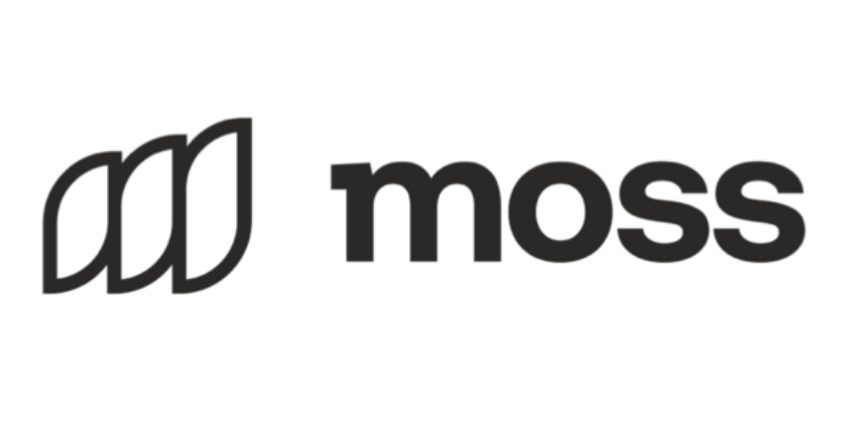




















.avif)


